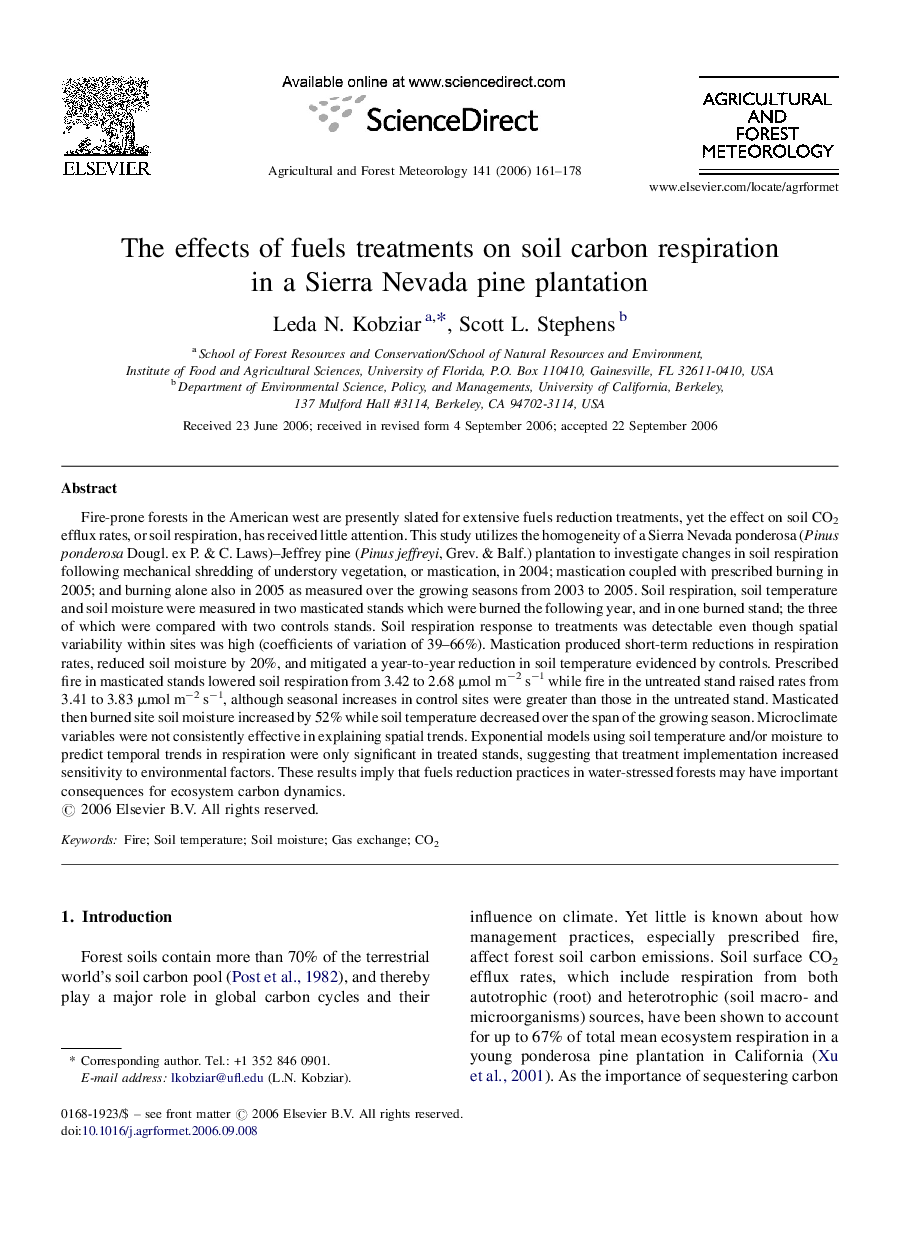| Article ID | Journal | Published Year | Pages | File Type |
|---|---|---|---|---|
| 82490 | Agricultural and Forest Meteorology | 2006 | 18 Pages |
Fire-prone forests in the American west are presently slated for extensive fuels reduction treatments, yet the effect on soil CO2 efflux rates, or soil respiration, has received little attention. This study utilizes the homogeneity of a Sierra Nevada ponderosa (Pinus ponderosa Dougl. ex P. & C. Laws)–Jeffrey pine (Pinus jeffreyi, Grev. & Balf.) plantation to investigate changes in soil respiration following mechanical shredding of understory vegetation, or mastication, in 2004; mastication coupled with prescribed burning in 2005; and burning alone also in 2005 as measured over the growing seasons from 2003 to 2005. Soil respiration, soil temperature and soil moisture were measured in two masticated stands which were burned the following year, and in one burned stand; the three of which were compared with two controls stands. Soil respiration response to treatments was detectable even though spatial variability within sites was high (coefficients of variation of 39–66%). Mastication produced short-term reductions in respiration rates, reduced soil moisture by 20%, and mitigated a year-to-year reduction in soil temperature evidenced by controls. Prescribed fire in masticated stands lowered soil respiration from 3.42 to 2.68 μmol m−2 s−1 while fire in the untreated stand raised rates from 3.41 to 3.83 μmol m−2 s−1, although seasonal increases in control sites were greater than those in the untreated stand. Masticated then burned site soil moisture increased by 52% while soil temperature decreased over the span of the growing season. Microclimate variables were not consistently effective in explaining spatial trends. Exponential models using soil temperature and/or moisture to predict temporal trends in respiration were only significant in treated stands, suggesting that treatment implementation increased sensitivity to environmental factors. These results imply that fuels reduction practices in water-stressed forests may have important consequences for ecosystem carbon dynamics.
